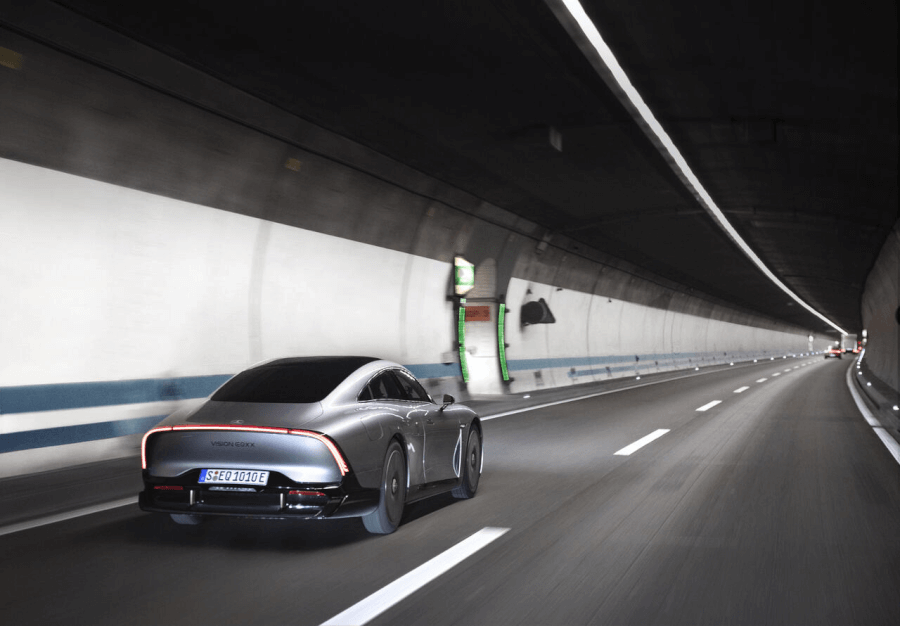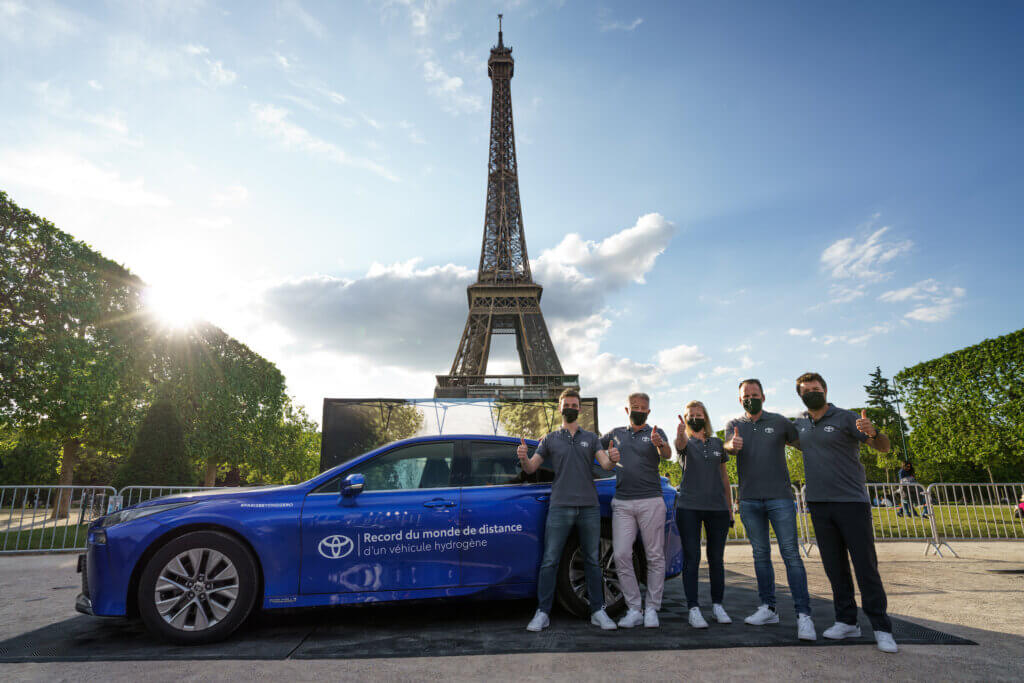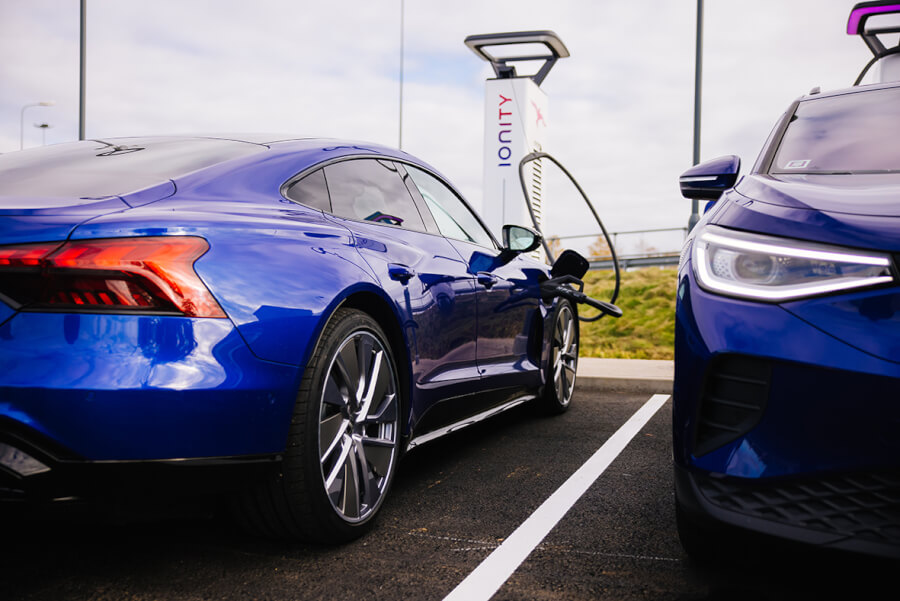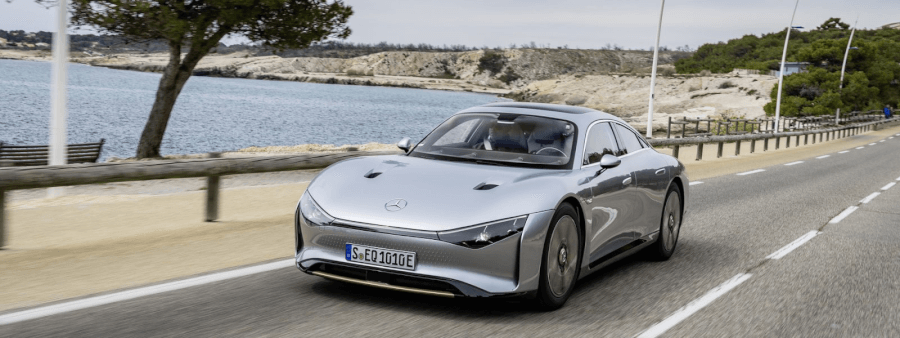The Vision EQXX can travel more than 1,200 km on a single charge – far more than its hydrogen cell rivals – with twice the efficiency of other electric cars.
In May 2021, Toyota announced to the world that its new second-generation hydrogen cell car, the Mirai has traveled 1003 km with one filling, demonstrating the hydrogen-powered model’s unique selling point. At the same time Hyundai went a similar distance with the Kona Electric, but on a closed track. In April of this year, Mercedes announced that their electric car (EV) prototype Vision EQXX has traveled 1008 km on a single charge with about 140 km of remaining autonomy, thus showing that the range of hydrogen cell cars is not unique. On June 23, Vision EQXX performed 1202 km from Stuttgart, Germany to Silverstone, UKon a single charge.
Toyota made this 1,000 km journey with the Mirai (Toyota Mirai Review), which has an official mileage of up to 647 km, and achieving this record required an ‘eco-driving’ style, but did not require special techniques that could not be used by everyday drivers”. At the same time, Toyota kept silent on how long it took for the trip made by four different drivers. From the video created, it was clear that it was at least 18 hours, but more likely closer to 24 hours.
Mercedes did the opposite, covering more than 1000 km in eleven and a half hours over the Swiss Alps, which included road repairs, at an average speed of 87.4 km/h, with temperatures ranging from +3°C to +18°C. The average speed and time show that no special ecological driving skills were used on the road and no routes were chosen that would contribute to speed reduction. June’s trip could be even more impressive, as the last electrons were laid out on the track after the completed route. The Vision EQXX went 11 laps before asking to be recharged.
Perhaps the most impressive aspect of the Vision EQXX’s ride isn’t its autonomy — after all, there are already several EVs on the market with longer ranges than the Mirai — but its efficiency. The average efficiency for the April trip was 8.7 kWh/100 km, and for the June trip – 8.3 kWh/100 km after 11 laps on the Silverstone track.

The Toyota Mirai, which has a longer range than its only mass-produced fuel cell rival, the Hyundai Nexo, traveled 1,000 km using 5.6 kg of hydrogen, which contains 186.6 kWh of usable energy. Mercedes used just 87 kWh of electricity on its journey, making it twice as efficient as both its own EVs and efficiency leaders Tesla. Twice less consumption is of course also reflected in the wallet.
Instead of simply increasing the battery size, the multi-functional international team focused on maximizing traffic efficiency. They got the most out of propulsion, power, aerodynamics and design.
Mercedes-Benz press release
However, while Mercedes has no plans to put the Vision EQXX into commercial production, the company explains that this automotive project has set a new benchmark for electric vehicle efficiency and autonomy, and the Vision EQXX technology will be used in future production Mercedes vehicles.
What remains for hydrogen cars if not autonomy?
They certainly won’t be more affordable, with both the Toyota Mirai and Hyundai Nexo more expensive than equivalent EVs and three to ten times more expensive to run than EVs. They are certainly not better in terms of environmental friendliness, since most of the hydrogen that is available for refueling around the world (including at the Riga hydrogen filling station) is obtained from gas.

IDTechEx explains that the Toyota Mirai’s hydrogen consumption is 0.86kg/100km, so when driven on H2, the Mirai is responsible for around 94g CO2/km, while the Nexo (1kgH2/100km) emits around 109g CO2/km . These figures prove that hydrogen is only a marginal improvement on the CO2 exhaust emissions of today’s internal combustion engines. This is, of course, without counting the pollution of supply and extraction.
The only way hydrogen cars make any sense—assuming they’re powered by green H2—is that if you can’t charge an electric vehicle at home, filling it up at a pump is much faster than at a public EV charging point. Even then, not always, because it’s actually refill time can take up to an hour.

Meanwhile, electric car charging capacities continue to increase and 350 kW charging station able to charge a Porsche Taycan in 19 minutes and a Hyundai Ioniq 5 in 17 minutes.
It is a foolish government to commit to massive public spending to support the purchase of hydrogen cell vehicles on the promise that one day the fuel will be available to make the transport sector low emission… Significant production and distribution challenges must be overcome to make H2 profitable emission-free automotive fuel.
What to start with H2?
Green hydrogen (produced from renewable energy resources) is necessary, other types of its colors (gray – from natural gas, blue – from natural gas with carbon capture technology, etc.) are not needed. It is needed not in transport, as its low efficiency makes it a very unattractive option, but in agriculture to produce fertilizer and in metalworking to obtain high temperatures. If anything is left over afterwards, it can be used to produce electricity, which has much wider applications, and heat (the conversion of hydrogen into electricity produces heat).



:strip_icc():format(jpeg)/kly-media-production/medias/4089359/original/008510300_1657846939-Apex_Legends_Mobile_Season_2_Distortion.jpg)